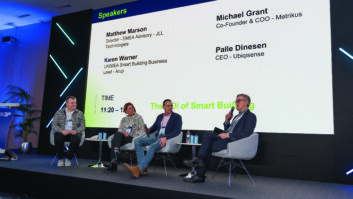
With the evolution of smart technology and the rise of advanced communications infrastructures, a new era of smart buildings is poised to emerge. According to Futuresource Consulting, this will pave the way for smart cities, where machine learning and artificial intelligence (AI) can predict and pre-empt future situations using sophisticated analysis and pattern matching.
“The primary focus for smart cities is on energy and the environment,” says Simon Forrest, principal technology analyst at Futuresource Consulting, “with secondary targets to enhance security and the wellbeing of citizens. One example of a smart city in action is the reduction of congestion across the road network. By aggregating live data from a range of sources, including vehicles themselves, local authorities will be able to divert traffic into and around cities more intelligently, with AI that formulates dynamic strategies to ease traffic flow.
“Imagine traffic lights that, instead of displaying the familiar green signal, show a dynamic arrow indicating which way drivers must turn in order to balance the traffic load across the road network.”
Yet for smart cities to become a viable reality, the majority of building stock must be fitted with smart technology as well. This is relatively straightforward for commercial and retail new builds, though smart building retrofits can be a challenge, both technologically and in educating companies about the wider benefits. A reduction in energy expenditure has tangible and immediate benefits for building owners, yet the advantages of smart building technologies extend much further. Forrest explained: “If energy suppliers were able to reduce electricity consumption across populations of smart buildings by a small amount, perhaps through temporary changes in HVAC cycles or by dimming communal area lighting slightly, then they may avoid the costs and environmental impacts of bringing another power station online during periods of high demand.
“Businesses are becoming switched on to the advantages of smart buildings, but there is still some way to go. We expect to see new government initiatives emerge, designed to encourage upgrades to existing building stock. It is only through the proliferation of smart buildings that the broader smart city initiatives can be fully realised.”







